Roof

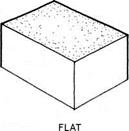
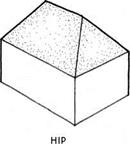
The roof is the part of the wood-frame structure that varies most widely across the country. This is because the roof plays the most active role of all the parts of a building in protecting against the weather, and in the United States, variations in weather are extreme. Some roofs protect primarily against the heat of the sun; others must shelter the inhabitants under tons of snow.
SELECTION OF ROOF SLOPE
One of the most obvious variations of roof form has to do with the slope or pitch of the roof. The main factors affecting the slope of a roof are stylistic considerations, the type of roofing material to be used, and the space desired beneath the roof. The climate also has a strong influence on roof slope. Areas of significant rainfall have roofs pitched to shed the rain, while warm, arid climates tend to favor flatter roofs.
The slope or pitch of a roof is measured as a proportion of rise to run. A roof that rises 4 in. in 1 ft. (12 in.) is said to have a 4-in-12 pitch (or 4:12). The second number in the roof-pitch proportion is always 12.
4
the shape of roofs
Roof shapes tend to have a regional character that reflects not only climatic variation, but also historical and material influences. All roof forms are derived from four basic roof shapes shown below: the flat roof, the shed roof, the gable roof, and the hip roof.
|
|
|
|
|
|
|
|
|

Introduction
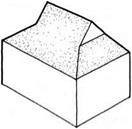
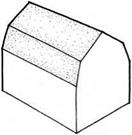

DUTCH GABLE GAMBREL
(HIP + GABLE) (2 SLOPES OF GABLE)
|
|
HALF HIP MANSARD
(hip + gable) (2 slopes of hip)
Virtually any roof form may be made by combining the four basic shapes with the connections illustrated in this chapter. Some of these composite shapes are so common they have their own names. For example, the hip and gable shapes can combine to form a Dutch gable. Two different slopes of gable roof can combine to form a gambrel roof. A shed dormer may be added to a gable roof, and so forth. Four common combinations are shown above.
Stick framing— One advantage of stick framing is that the space within the roof structure can become living space or storage. Vaulted (cathedral) ceilings, half-story living spaces on upper floors, and true storage attics are all examples. A second advantage is that complex roofs may be stick-framed more economically than truss-framed. For owner-builders who need not include the cost of labor, stick framing is especially attractive.
|
|
Truss framing— Trusses can span much farther than stick-framed roofs, leaving large open areas below them or permitting partition walls to be relocated without consideration for the roof structure above. Trusses go up quickly, usually resulting in a cost saving over stickframed roofs on simply shaped buildings. A big disadvantage of trusses is that the truss roof is almost impossible to remodel, since trusses should never be cut.






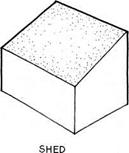

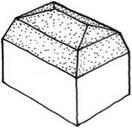
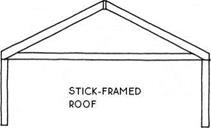
Leave a reply